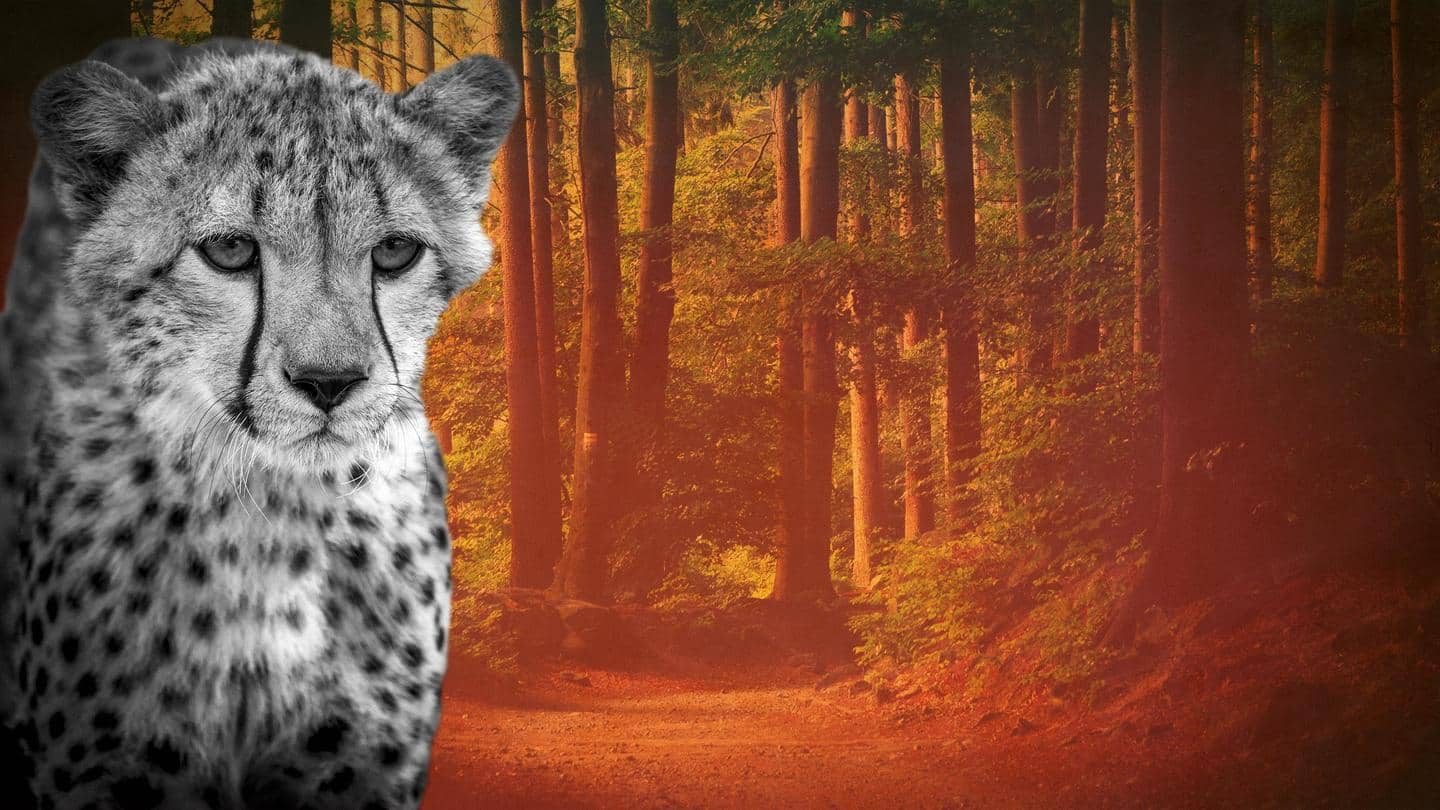
Delhi's Asola Bhatti Wildlife Sanctuary is home to 8 leopards
What's the story
A year-long study by the Bombay Natural History Society (BNHS) and the Delhi forest department has confirmed the presence of eight leopards among other mammals in the Asola Bhatti Wildlife Sanctuary (ABWS) in South Delhi.
It reflects a thriving ecosystem of the ABWS and highlights the importance of the wildlife corridor spanning from Asola Bhatti to Sariska Tiger Reserve in Rajasthan.
Context
Why does this story matter?
No leopard sighting was recorded in ABWS for decades after 1940.
In 2019 the Delhi forest department found leopard pug marks and scats in the sanctuary indicating the big cat's presence.
The presence of the leopards is not just a positive indication for this animal group but the holistic health of the sanctuary as a butterfly effect in the backdrop of human-wildlife conflict.
Information
The study will continue for two more years
The study began in June last year and collected data using 42 infrared stealth camera traps.
Eight leopards were identified from the 111 photos from camera traps in the sanctuary spread across 32.71 square kilometer.
The study, which will continue for two more years, gave an estimate of the population size and spatial distribution of the leopards.
Details
ABWS part of larger ecological corridor
BNHS assistant director Sohail Madan said one of the objectives of the study was to demonstrate that ABWS doesn't stand in isolation but is part of a larger ecological corridor.
Urbanization surrounding sanctuaries turns them into zoos trapping animals with no long-term viability.
The leopards making the urban forest their home despite populous human settlements abutting the sanctuary reflects a healthy ecosystem.
Other mammals
Striped hyena, black buck, sambar deer also spotted
Apart from the leopards, the study also showed the presence of striped hyena, jungle cat, golden jackal, Indian hare, Indian boar, black buck, sambar deer, spotted deer, hog deer, and others.
The striped hyena is a nocturnal animal and has been listed as 'near threatened' by the International Union for Conservation of Nature (IUCN).
The hyenas follow the leopards to scavenge its preys.